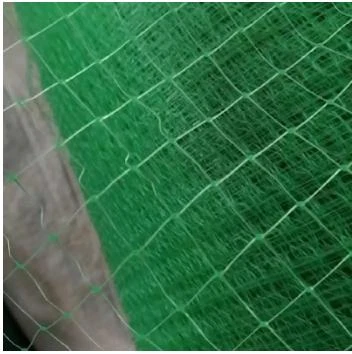-
 Afrikaans
Afrikaans -
 Albanian
Albanian -
 Amharic
Amharic -
 Arabic
Arabic -
 Armenian
Armenian -
 Azerbaijani
Azerbaijani -
 Basque
Basque -
 Belarusian
Belarusian -
 Bengali
Bengali -
 Bosnian
Bosnian -
 Bulgarian
Bulgarian -
 Catalan
Catalan -
 Cebuano
Cebuano -
 China
China -
 Corsican
Corsican -
 Croatian
Croatian -
 Czech
Czech -
 Danish
Danish -
 Dutch
Dutch -
 English
English -
 Esperanto
Esperanto -
 Estonian
Estonian -
 Finnish
Finnish -
 French
French -
 Frisian
Frisian -
 Galician
Galician -
 Georgian
Georgian -
 German
German -
 Greek
Greek -
 Gujarati
Gujarati -
 Haitian Creole
Haitian Creole -
 hausa
hausa -
 hawaiian
hawaiian -
 Hebrew
Hebrew -
 Hindi
Hindi -
 Miao
Miao -
 Hungarian
Hungarian -
 Icelandic
Icelandic -
 igbo
igbo -
 Indonesian
Indonesian -
 irish
irish -
 Italian
Italian -
 Japanese
Japanese -
 Javanese
Javanese -
 Kannada
Kannada -
 kazakh
kazakh -
 Khmer
Khmer -
 Rwandese
Rwandese -
 Korean
Korean -
 Kurdish
Kurdish -
 Kyrgyz
Kyrgyz -
 Lao
Lao -
 Latin
Latin -
 Latvian
Latvian -
 Lithuanian
Lithuanian -
 Luxembourgish
Luxembourgish -
 Macedonian
Macedonian -
 Malgashi
Malgashi -
 Malay
Malay -
 Malayalam
Malayalam -
 Maltese
Maltese -
 Maori
Maori -
 Marathi
Marathi -
 Mongolian
Mongolian -
 Myanmar
Myanmar -
 Nepali
Nepali -
 Norwegian
Norwegian -
 Norwegian
Norwegian -
 Occitan
Occitan -
 Pashto
Pashto -
 Persian
Persian -
 Polish
Polish -
 Portuguese
Portuguese -
 Punjabi
Punjabi -
 Romanian
Romanian -
 Russian
Russian -
 Samoan
Samoan -
 Scottish Gaelic
Scottish Gaelic -
 Serbian
Serbian -
 Sesotho
Sesotho -
 Shona
Shona -
 Sindhi
Sindhi -
 Sinhala
Sinhala -
 Slovak
Slovak -
 Slovenian
Slovenian -
 Somali
Somali -
 Spanish
Spanish -
 Sundanese
Sundanese -
 Swahili
Swahili -
 Swedish
Swedish -
 Tagalog
Tagalog -
 Tajik
Tajik -
 Tamil
Tamil -
 Tatar
Tatar -
 Telugu
Telugu -
 Thai
Thai -
 Turkish
Turkish -
 Turkmen
Turkmen -
 Ukrainian
Ukrainian -
 Urdu
Urdu -
 Uighur
Uighur -
 Uzbek
Uzbek -
 Vietnamese
Vietnamese -
 Welsh
Welsh -
 Bantu
Bantu -
 Yiddish
Yiddish -
 Yoruba
Yoruba -
 Zulu
Zulu
Mild Steel Welded Mesh for Versatile Applications in Construction and Fencing
The Versatility of Mild Steel Welded Mesh
Mild steel welded mesh has established itself as a cornerstone material in various industries and applications due to its strength, ease of fabrication, and cost-effectiveness. Composed predominantly of low carbon steel, this mesh exhibits excellent ductility, making it an ideal choice for diverse uses ranging from construction to agriculture.
Composition and Features
Mild steel, with its low carbon content (typically around 0.05% to 0.25%), offers a balance of strength and malleability. This property allows for easy machining and welding, enabling the production of welded mesh with precise specifications. The wires are welded at their intersections, creating a grid pattern that enhances structural integrity while maintaining flexibility.
Mild steel welded mesh is available in various configurations, including different wire diameters, mesh sizes, and sheet dimensions. Originally designed for reinforcement in concrete structures, it has evolved to meet the needs of modern construction, agriculture, mining, and security systems.
Applications in Construction
In the construction industry, mild steel welded mesh serves as an essential reinforcement material for concrete slabs, walls, and floors. Its use in concrete infrastructure helps distribute loads evenly, enhancing the tensile strength of structures and reducing cracking. This reinforcement mesh is particularly effective in applications where aesthetic considerations and ribbed or non-ribbed textures are required.
Beyond reinforcement, welded mesh is also used for fencing and safety barriers. It provides a strong, durable solution for securing construction sites and preventing unauthorized access. The visibility of the mesh enhances site safety, allowing workers and passersby to see through while maintaining a significant level of security.
mild steel weld mesh

Agricultural Uses
In agriculture, mild steel welded mesh is utilized for various tasks, from creating animal enclosures to protecting crops from pests. Its robust construction prevents animals from breaking through, offering a reliable barrier for livestock. Farmers often use welded mesh for fencing, ensuring that their animals are kept safe and contained within the designated areas.
Additionally, welded mesh plays a crucial role in horticulture. Gardeners use it as trellising or support for climbing plants, ensuring that crops grow vertically and are easier to manage. The open structure of the mesh allows sunlight and water to reach the plants, promoting healthy growth while providing essential support.
Security Solutions
The security industry has also embraced mild steel welded mesh due to its strength and affordability. It is commonly deployed in commercial and residential fencing, providing a physical barrier that deters intruders while remaining visually unobtrusive. With various coating options available, including galvanized finishes, the mesh is resistant to rust and corrosion, ensuring longevity even in harsh weather conditions.
Moreover, welded mesh is often used in the construction of security cages for commercial use, protecting valuable equipment and inventory. Its adaptability means it can be customized to fit various security needs, from window grills to full-scale enclosures.
Conclusion
Mild steel welded mesh stands out as a versatile material that offers unparalleled strength and functionality across numerous industries. Its applications in construction, agriculture, and security demonstrate its ability to meet the diverse needs of modern society. As technology progresses, innovations in welding techniques and coatings are poised to enhance the capabilities and lifespan of this essential material even further. Whether it’s providing safety and security or reinforcing structures, mild steel welded mesh remains an indispensable resource, proving its worth time and again. As such, it is crucial for professionals across industries to understand its potential and integrate it into their projects effectively.
-
Shipping Plastic Bags for Every NeedNewsJul.24,2025
-
Safety Netting: Your Shield in ConstructionNewsJul.24,2025
-
Plastic Mesh Netting for Everyday UseNewsJul.24,2025
-
Nylon Netting for Every UseNewsJul.24,2025
-
Mesh Breeder Box for Fish TanksNewsJul.24,2025
-
Expanded Steel Mesh Offers Durable VersatilityNewsJul.24,2025











